Remote vs in-the-flesh hearings … Split bench of Allsop, Bell, and Ferguson CJs… Less Q & A … More flexibility … Less humanity … More efficiency … Judicial hits on YouTube … Coat of arms not just a piece of artwork …Winds of conservatism blow briskly through the legal world … Margery Ai reports
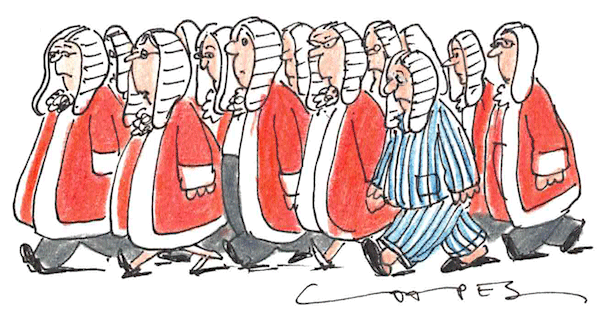
Are remote hearings here to stay?
I want to be in the room where it happens. So, apparently, does Justice Stephen Gageler of the High Court, who said as much – or sung, I'm not sure, I wasn't in the room where it happened – at the recent Australian Bar Association conference in late April:
"To adapt a refrain from a current long-running musical production, which has itself withstood COVID, whether or not we are to be counted amongst those who made an important thing happen, our professional lives are diminished if we are not 'in the room where it happens'."
He and the Hamilton lyrics might have a point.
If judges, lawyers, clients, and witnesses are not in the physical courtroom, instead dialling in, logging on, or – least conveniently of all – 'waiting to be admitted', can something as significant as justice happen? Just because we can do hearings online, does that mean we should? And, if we do embrace the change, do we risk technology no longer being the servant, instead becoming the master?
As we emerge from the pandemic, these and more are the questions of the day.
A split bench
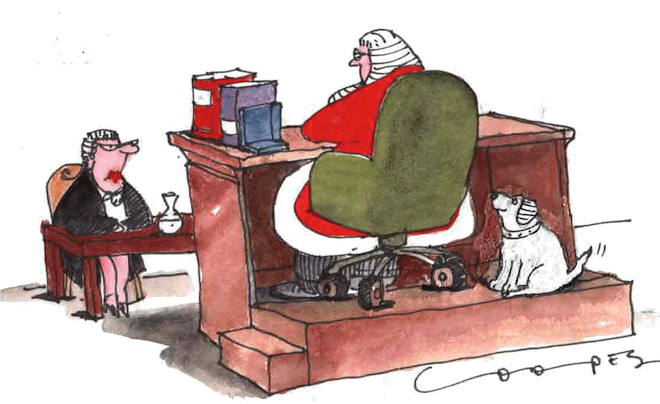
Judges and lawyers are divided on the issue. On one side, Andrew Bell, Chief Justice of the NSW Supreme Court, generally opposes remote hearings, saying in a discussion at the ABA Conference:
"The notion that we will be going to or even contemplating remote hearings, other than in the most exceptional circumstances, at least under my watch, is not going to happen."
The way Bell CJ sees it, the back and forth between the bench and bar is inhibited, evidence is given imperfectly, and the perception of the court's authority is weakened.
Similar views are expressed by James Allsop, Chief Justice of the Federal Court. In his speech at the conference, he acknowledged the benefits of moving hearings online – increased access, cheaper costs – but thought they involved "real compromises in important aspects of the process".
By this he's talking about the absence of the "human element" in persuasion – courts are, he says, institutions that involve human reasoning and human emotion, and the physical attributes of a courtroom enable both. Online hearings, by comparison, have "removed the spark of humanity in some advocacy".
William Alstergren, Chief Justice of the Federal Circuit and Family Court, also sides this way, saying that remote hearings "shouldn't be the norm".
On the other side is Anne Ferguson, Chief Justice of the Victorian Supreme Court, who's quick to praise the flexibility and accessibility of remote hearings. Importantly, "not being in a physical courtroom or workplace", she said in her speech, "means you can operate from anywhere".
Solicitors are also keen on doing things remotely. In the NSW Law Society's recently published survey, A fair post-COVID justice system, which surveyed 1,483 members between 13 July and 4 August 2021, one result found that more than 90 per cent of solicitors wanted to retain the flexibility to participate in online case management and directions hearings.
In a press release in June, President Joanne van der Plaat said that the Law Society, when briefing the Attorney-General, considered that "the gains made, particularly in doing non-contested and case management proceedings online, should not be lost".
On the same side of the debate, but at the farthest end, is Professor Richard Susskind, a futurist and specialist in legal technology, who also spoke at the ABA Conference – via AVL, of course.
Susskind hopes that in the near future, all cases will be conducted online by default, unless there are compelling reasons to assemble in a courtroom, and that more distantly, "artificial intelligence and virtual reality [become] central pillars of the court system".
As long as we're administering justice
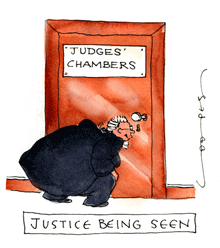 But despite the differing attitudes towards remote vs. in person hearings, the debate may not be so black and white.
But despite the differing attitudes towards remote vs. in person hearings, the debate may not be so black and white.
Dr Matt Collins QC, President of the Australian Bar Association, tells me there's a public tendency to exaggerate the differences between the judges.
"There is a division, but it's within a relatively narrow field", he says. "Everybody agrees that the right answer lies in what best serves the administration of justice."
It's true the judges are unanimous on this point.
Allsop CJ said that it will be important in any model that "technology is used as a tool for the administration of justice"; Bell CJ said that he is "talking about what we are all engaged in, and that is to say the fair administration of justice in a mature democracy"; and Ferguson CJ emphasised that reducing costs and improving efficiency "improves access to justice".
The question, then, is not as simple as: Are you for or against remote hearings? The better question, and one to ask before anything else, is: Can remote hearings achieve the ends of justice?
If they can, they should be allowed to stay.
The elements of justice
Justice, however, is not one-dimensional. In his book Online Courts and the Future of Justice, Susskind developed the "justice test", against which any court service, whether online or traditional, can be evaluated. Among the seven elements of his test were: procedural justice, substantive justice, access to justice, and open justice.
Whether a hearing is best done online or in person will turn on which element is most in demand for the particular hearing. That depends on the nature of the subject matter, and the type of hearing. So the ideal format will differ for criminal, commercial, family, and migration matters, as it will for directions, interlocutories, trials, and appeals.
In some matters, procedural justice will be paramount. A criminal trial conducted remotely is not a desirable thing, as Bell CJ points out: "not just at the level of logistics but at the level of basic fairness".
For the same reason, family, migration, and personal injury cases, where liberty and humanity are at stake, might be better done in the flesh, robes and wig in action, trolley in tow.
In other matters, parties might care most about doing things quickly and cheaply – that is, access to justice. The smaller stuff, the mentions and some interlocutories, would see real cost savings if done remotely, at home in pyjamas.
With these nuances in mind, it seems there's consensus after all. Everyone's talking about justice. It's only a matter of what kind, and when to most protect it.
Procedural justice – lights, camera, but not much action
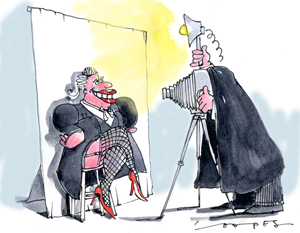 The design of a physical courtroom – its architecture, and as a result, its atmosphere – all of which is lost online, seems to aid procedural fairness. That being so, the two-dimensional experience on Zoom or Microsoft Teams seems to undermine it.
The design of a physical courtroom – its architecture, and as a result, its atmosphere – all of which is lost online, seems to aid procedural fairness. That being so, the two-dimensional experience on Zoom or Microsoft Teams seems to undermine it.
Barrister Ian Neil SC tells me his clients are not as confident in the process when the hearing is online. One big sacrifice is the quality of persuasion.
"The tools of persuasion", Neil SC says, "exist in a physical courtroom in a way they don't exist in any other environment."
One tool of persuasion is interacting skilfully with the bench, which involves handling questions during submissions. But judges are asking fewer questions in remote hearings. "Either we have an oral tradition or we don't", Bell CJ said. He views the loss of the Socratic method as especially harmful to the process: "I think that Q and A is critical … the judge's mind does change as a result of the interaction."
Not only are judges asking fewer questions, and advocates changing fewer minds, some judges aren't even turning on their cameras. "If you can't see somebody", Neil SC says, "you are deprived of a fair opportunity to present your case". He adds that in appeals, "it's so hard to take the temperature of a room of three judges, when you are, in fact, not in a room".
In addition to the loss of persuasiveness, what's also compromised is the perception of the court's legitimacy. In a physical courtroom, the bench is separated from the bar table by both distance and height. The judge sits down, the barrister stands up. The court officer opens the court, everyone including the public gallery rises, and they all bow towards the coat of arms.
"All of these things do make subtle differences", Collins QC tells me.
They create an environment of solemnity and formality, Allsop CJ said. They "emphasise the gravity of the decision to be made". Bell CJ also spoke about this, observing that judges are elevated "not for reasons of vanity" but "to represent the authority being exercised." Crucially, the coat of arms is "not just a piece of artwork".
Another issue in procedure is the way evidence is given online. In a courtroom, a witness steps into the witness box, a separate space, swears or affirms an oath or affirmation in front of a room full of people, and so, one hopes, takes the job rather seriously.
Online, by comparison, a witness might be giving evidence on a mobile phone in their garden, as Bell CJ recalled. "It wasn't helpful to them, and critical bits of evidence were lost in the transcript", he said. The appeal, as a result, was heard imperfectly.
Substantive justice – resolving disputes with humanity
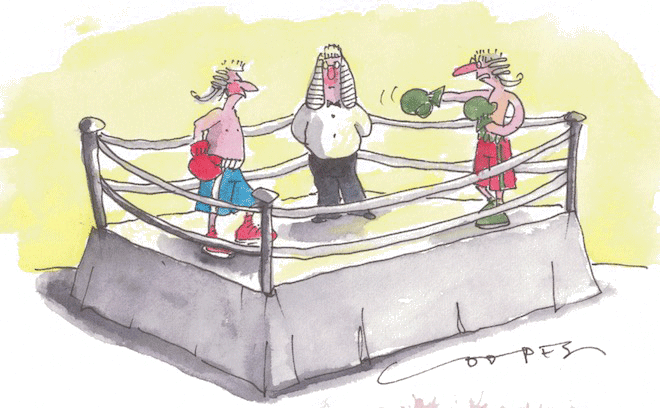
Unfortunately, remote hearings aren't great for substantive justice, either.
The point of lawyers is to resolve disputes that people can't resolve by themselves. As Collins QC says, "we don't exist to justify our own egos".
Trying to resolve disputes online, though, can be a challenge. "It's so much easier to narrow issues and to settle disputes when you're sitting physically with a client and solicitor", Collins QC says.
That's so in directions hearings, too. Neil SC mentions that in online hearings, you lose the advantages you get when people come together before and after.
"How many directions have I agreed when I was a young barrister in the minutes before my case was called on? Thousands upon thousands."
Ultimately, if we want fair outcomes, being physically in a room does seem to add a magic ingredient. As Allsop CJ put it:
"... at the heart of the law, the courtroom, and court process, is the human element shaped by human experience."
Access to justice – just, quick, and cheap
While remote hearings don't do much for procedural justice or substantive justice, they can do a lot for access to justice.
They tend to be quicker, cheaper, and more convenient.
All of the judges recognised this. Gageler J said that doing things remotely "has led to an increase in efficiency", Allsop CJ said it "reduces the costs and hours associated with travelling", and Ferguson CJ pointed out it's "far easier for people from suburban and regional areas, interstate or overseas to participate".
One interesting benefit is the less intimidating atmosphere online – it may even strengthen the performance of counsel and litigants. Allsop CJ said that the less confrontational environment may "allow for more open and frank interactions".
Likewise, in the Family Court, Alstergren CJ noticed that vulnerable people, particularly women, were able to attend court from a safe place. This was so in circumstances where they "would never have come to a courthouse … never faced their persecutor [or] former partner".
Open justice – hits on YouTube

For the final element of justice, open justice, remote hearings are excellent. As, indeed, they are for the public profile of judges – "you get a lot of hits on YouTube", Alstergren CJ said to Bell CJ.
The public gallery exists in a physical courtroom to ensure transparency. But Ferguson CJ noted that while public galleries in past high-profile cases were filled, capacity was limited.
"Now, the physical constraints of a building no longer determine how many can have access."
It was "no bad thing" then, according to Gageler J, that people tuned in to the Queensland Floods litigation, the challenge to the Covid-19 Regulations, the anti-vax proceedings against the NSW Health Minister, and the Djokovic proceedings in the Full Federal Court.
"There's a great appetite for people to watch television shows about court proceedings", Bell CJ said, "so the live streaming I'm 100 per cent behind".
What lies ahead?
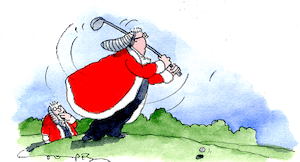 Whichever way the next chapter goes, there's no denying that all of this tech is new, and lawyers don't like new.
Whichever way the next chapter goes, there's no denying that all of this tech is new, and lawyers don't like new.
Some are cautious. Bell CJ urges:
"Just because the technology is here, just because it's been paid for, doesn't mean we throw everything out."
And Allsop CJ advises:
"Before we embark on an upheaval of the court model, it is necessary to collate information and feedback about the technology used."
Some are alert to the caution. Ferguson CJ warns against winding back the clock.
"Let's not snap back to March 2020. History has shown that after times of great upheaval there can be nostalgia for the past and a desire to revert."
Some are throwing caution to the wind. "The winds of conservatism blow briskly through the legal world", Susskind writes, and "many judges and litigators are quietly hunkering and hankering – hunkering down until the viral storm passes while hankering after a complete return to the physical courts". Technology, he says, is not here to "support and enhance our old ways of working" but to "overhaul and often replace our practices of the past".
But perhaps Collins QC put it best, when he said:
"In 2040, do we really think I'm going to be flying to Sydney to seek consent orders? Of course not. People who started Netflix or who started the Ford motor company, that's the way. Harnessing changes to their advantage. But we must resist where the changes being forced upon us are to the detriment of the administration of justice."
That harnessing, and indeed, that resistance, is where the nuance resides.